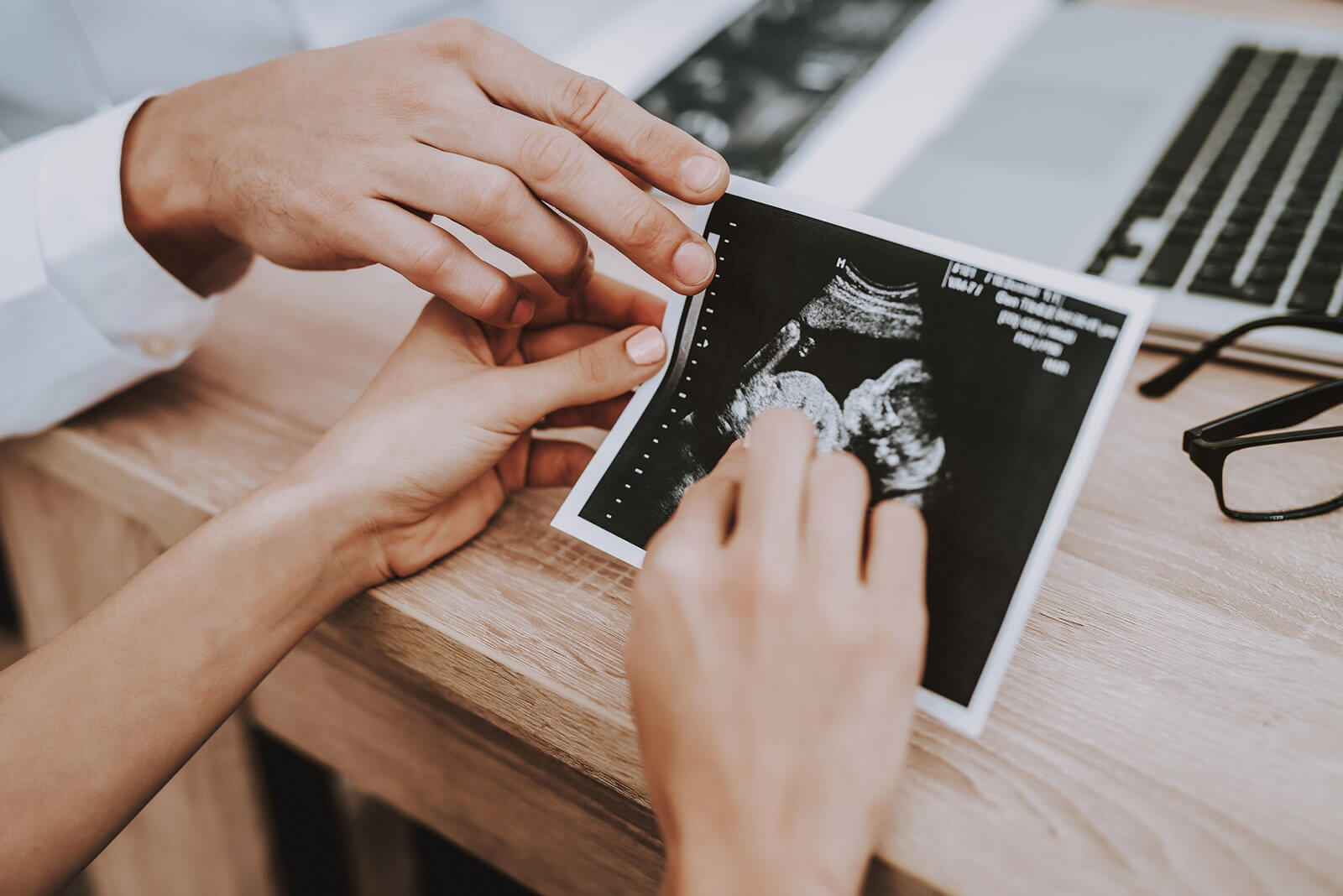
Well prepared
PRENATALDIAGNOSTICS
Special examinations during pregnancy show the development of your child. In the process, you can detect or exclude possible illnesses or malformations in your baby early.
Nuchal translucency
Between 11th+6 and 13+6 week of gestation
Measuring the nuchal translucency enables the calculation of probability for a chromosomal abnormality in the unborn child (e.g. Down syndrome).
It can also serve as a sign for a heart defect and a number of other congenital or acquired diseases.
Cell-free fetal DNA Test from the maternal blood
Between 10th+1 and 22nd week of gestation
This test searches for the three most common congenital forms of trisomy, such as the Down Syndrome, Edwards Syndrome and Pätau Syndrome.
Independent validation studies showed a detection rate of 99.9% for these three forms of trisomy.
Additionally, further genetic modifications can be tested, such as microdeletion syndromes and maldistribution of sex chromosomes.
Upon request, also your baby's sex can be determined.
Amniocentesis or amniotic fluid puncture
As from the 16th week of gestation
The amniocentesis is implemented for the targeted diagnosis after an abnormal first-trimester test.
If there is a severe hereditary disease within the family, an amniocentesis can determine whether an unborn child is affected by a genetic defect.
Through the abdominal wall of the pregnant woman, a small amount of amniotic water is extracted from the amniotic sac with a thin hollow needle (under ultrasound control) and genetically analysed.

Organ ultrasound / Organ screening
20th - 24th week of gestation
In the organ screening, all embryonic organs as well as the unborn child's body structure is thoroughly examined.
Here, the main focus is the development of the brain, the face, the spine, the inner organs and the limbs.